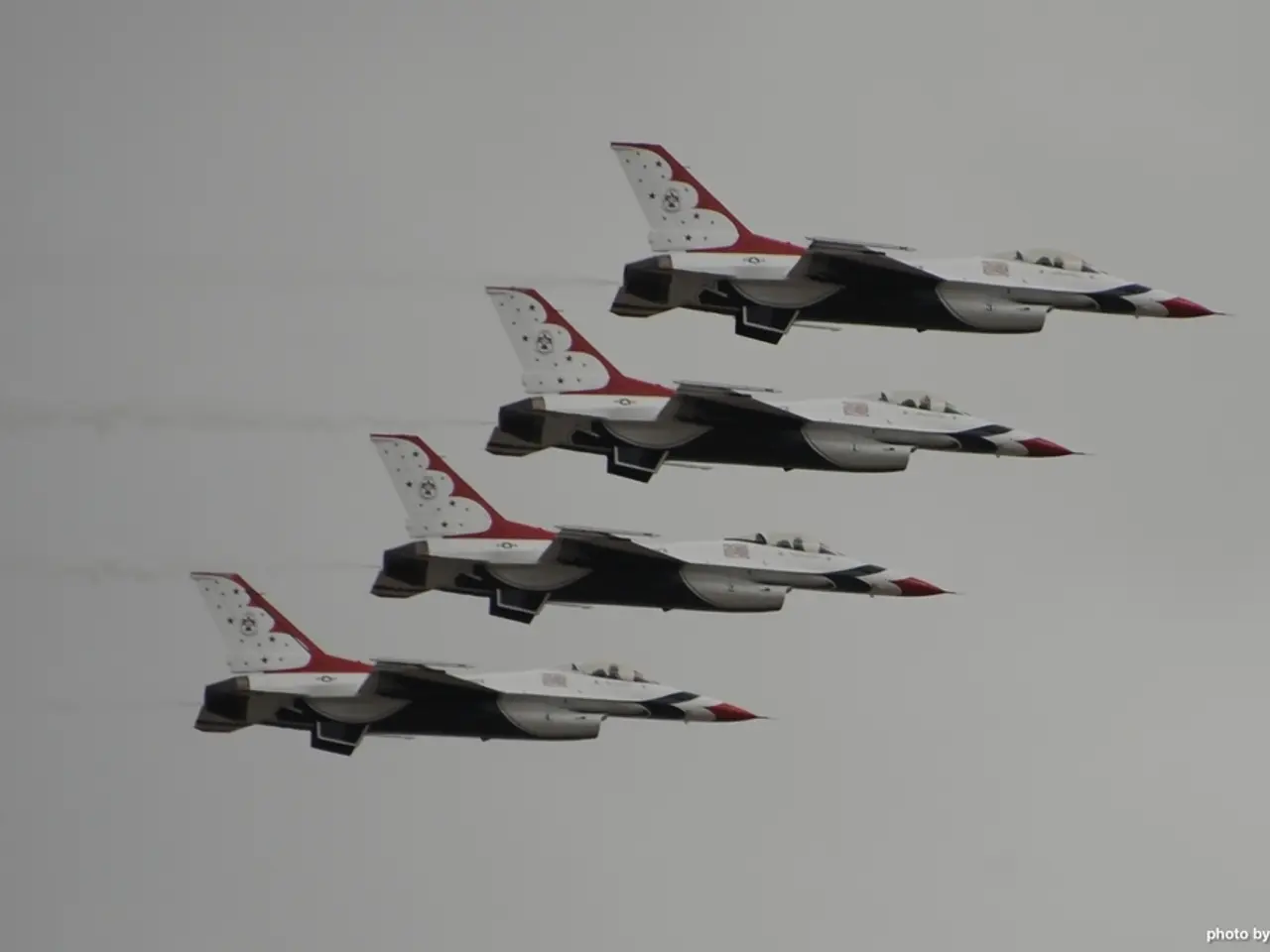Eurofighter's significance in protection, economic sector, and national independence
Eurofighter Typhoons Strengthen NATO's Eastern Frontier
Eurofighter Typhoons are playing a crucial role in NATO's enhanced Persistent Effort air policing, providing continuous airspace protection over the Alliance’s eastern and southeastern flanks. These advanced fighter jets are deployed on rotation to strategic bases in Eastern Europe, reinforcing NATO’s collective defense and collaborating with host nation air forces.
The German Air Force has stationed five Eurofighter Typhoons at Poland’s 23rd Tactical Air Base in Mińsk Mazowiecki, patrolling the eastern border airspace. About 150 additional German forces support this deployment, which follows a request from Poland and signals a tangible engagement to protect Central and Eastern Europe’s security.
Similarly, Germany has deployed five Eurofighter Typhoons to Mihail Kogălniceanu Air Base in Romania, marking its fourth such rotation there. These jets work closely with Romanian F-16s and other NATO forces in training exercises during an approximately eight-month mission.
The Eurofighter Typhoon’s flexibility and interoperability have been demonstrated in varied NATO air policing missions, including in the Baltic region. The aircraft's ability to adapt rapidly and integrate with allied air forces across Europe underscores its importance as a central fighter platform for air policing along NATO’s eastern frontiers.
The Eurofighter programme is a joint effort between Germany, Spain, the UK, and Italy, at the heart of European defence and a key pillar of national industry. The programme is driving innovation and creating jobs, with Airbus, BAE Systems, and Leonardo managing industrial suppliers employing more than 100,000 skilled workers, engineers, technicians, and factory workers in some 400 companies across Europe.
The Eurofighter will serve as the natural bridge to the European Future Combat Air System (FCAS), where it will fly in a network with uncrewed and crewed platforms. The Eurofighter Halcon II and the expected German Tranche 5 order are essential to maintaining the expertise and strategic capability needed to develop and produce these state-of-the-art fighters.
The Eurofighter Typhoons have been a key asset in deterring potential threats, with Allies keeping some fighter aircraft units in permanent Quick Reaction Alert (QRA) status, indicating a high state of readiness. In 2024, NATO air forces across Europe scrambled more than 300 times to intercept Russian military aircraft approaching Alliance airspace.
On 13 February, an unidentified aerial vehicle from Russia briefly crossed into Romanian airspace, underscoring the need for continuous vigilance. Spanish Eurofighter pilots have worked hand in hand with German pilots in Estonia, demonstrating the strength of allied solidarity in maintaining peace and security.
The Eurofighter programme is expected to contribute €58 billion to the GDP of the four core nations' economies over the next decade and generate €14 billion in tax revenues for their respective governments (according to a report published by PwC). The programme is not just a demonstration of industrial resilience and national sovereignty, but also a commitment to European security.
Technology, such as the advanced Eurofighter Typhoon, plays a significant role in education-and-self-development, with numerous tech firms working on its development, and it provides a substantial boost to the general-news sector due to its implications for the defense industry and international relations. In sports, one can draw parallels with the Eurofighter Typhoon's performance in missions, mirroring the strategies, teamwork, and agility required in sports.




